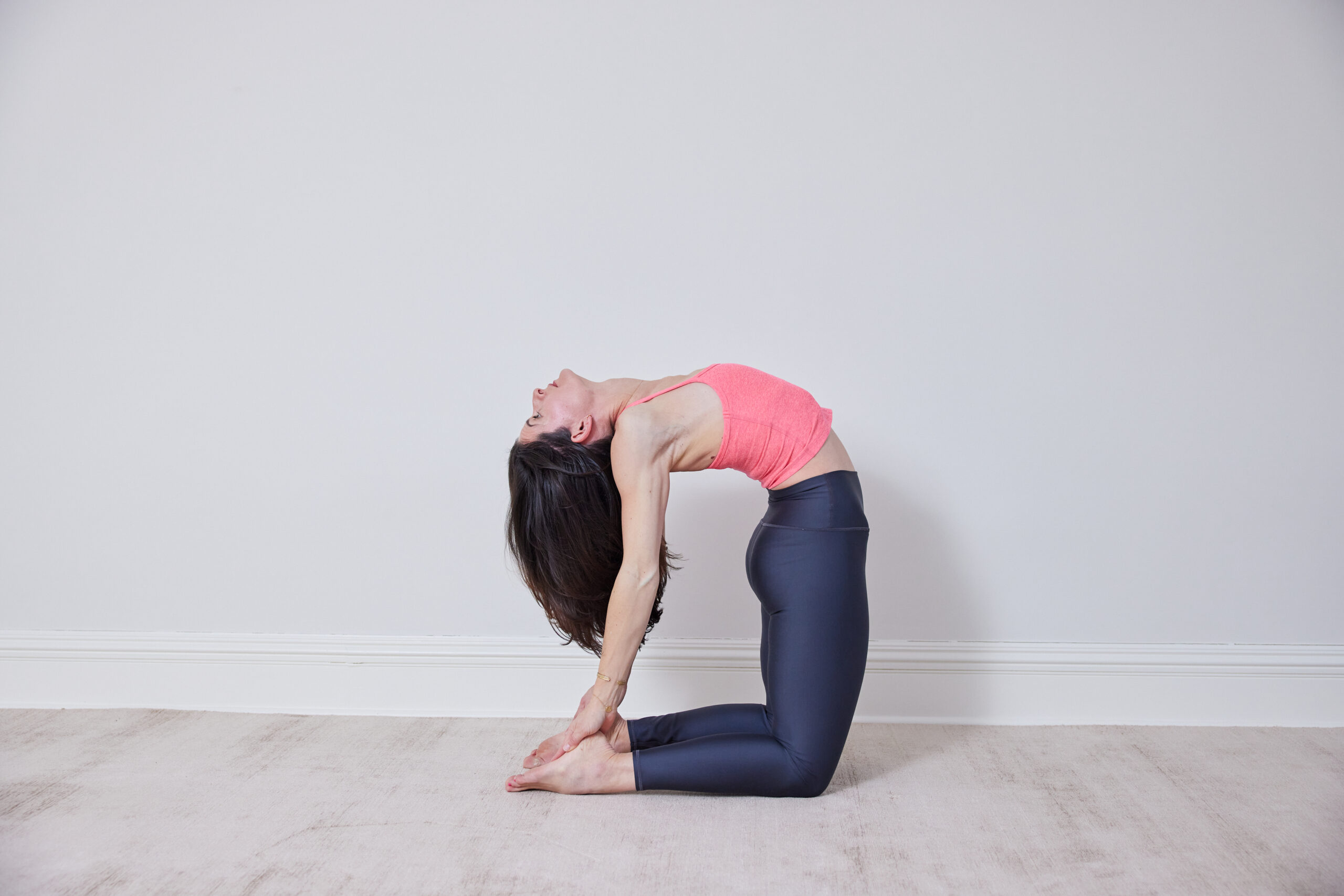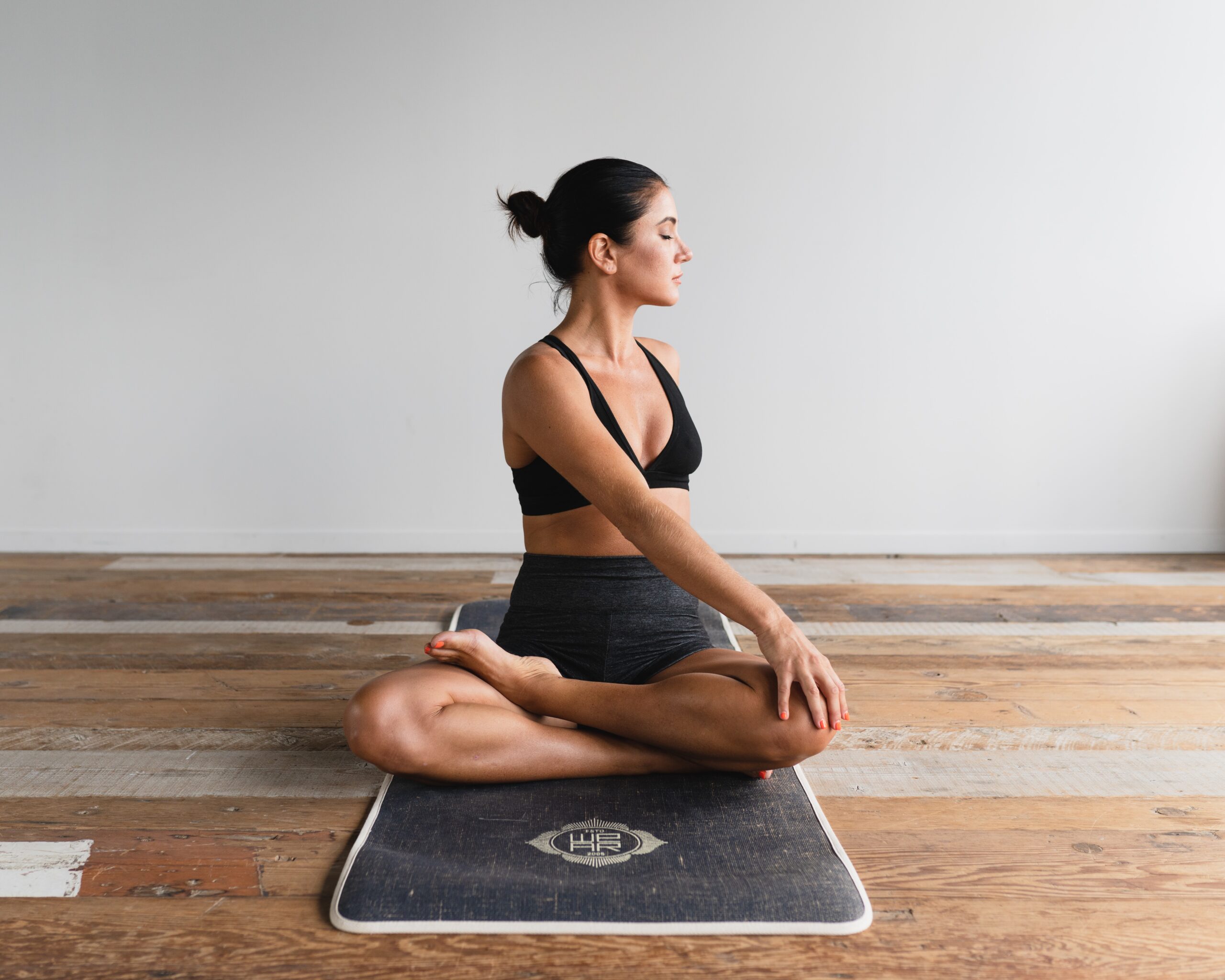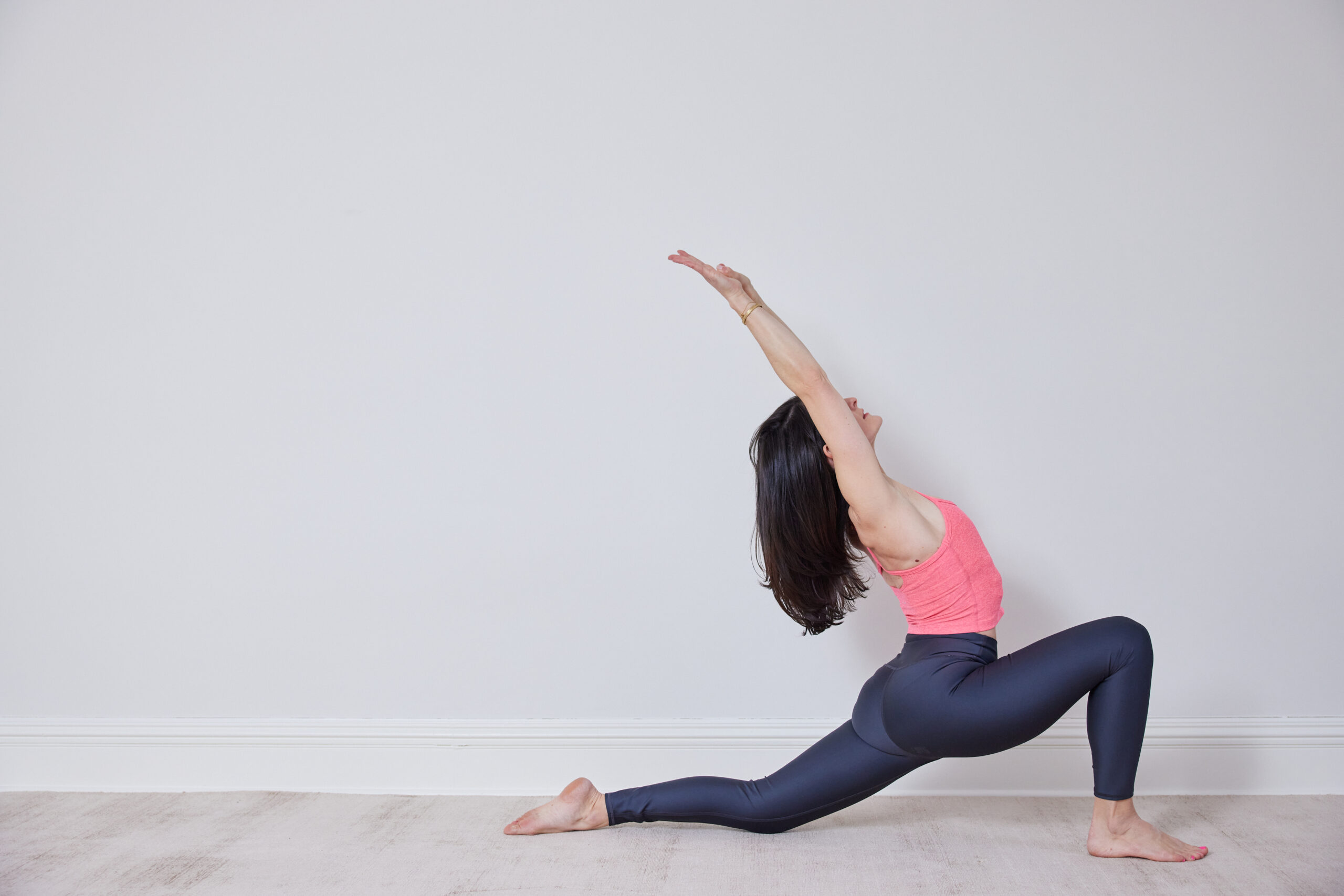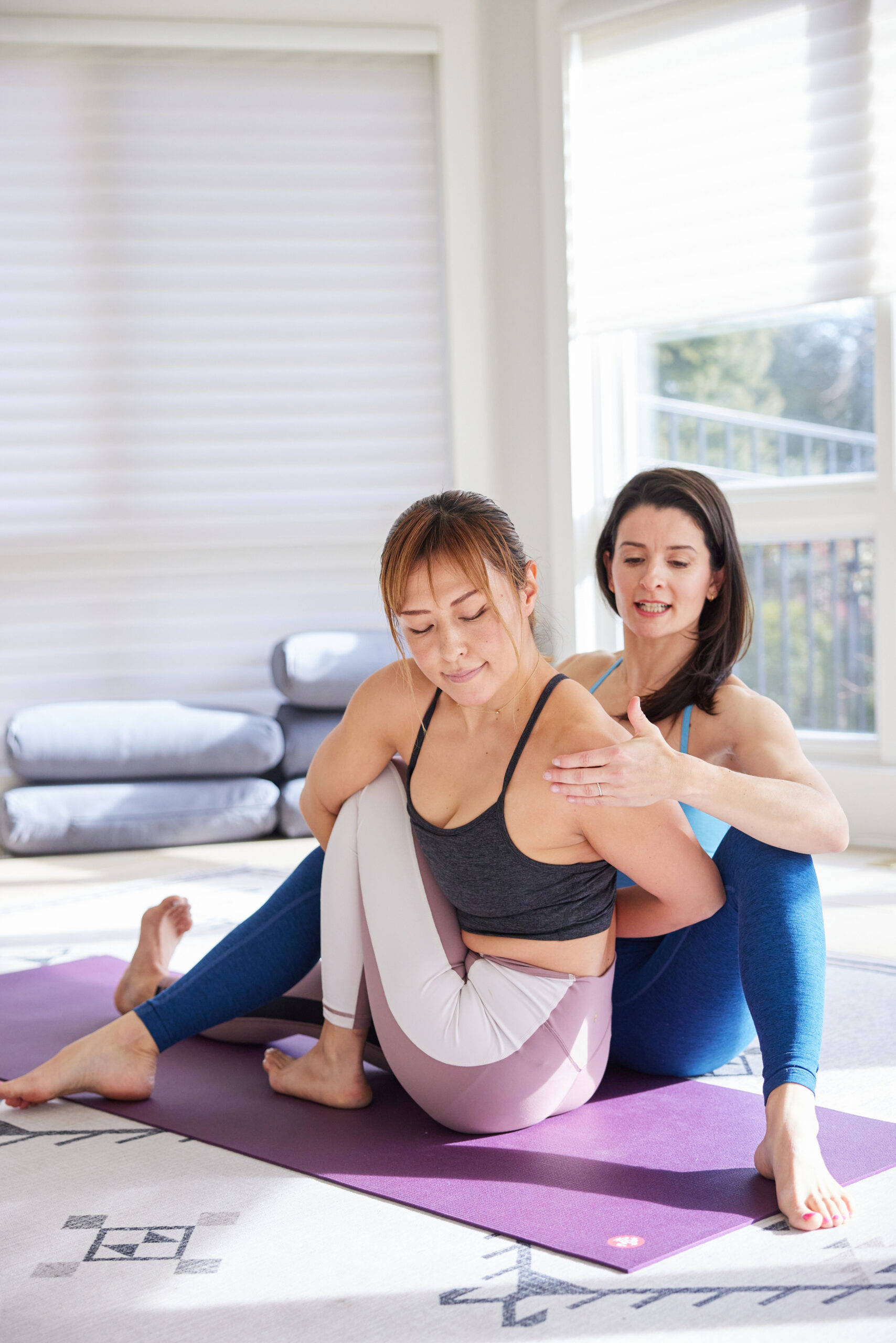What is Vinyasa Yoga?
Learning one or several variations of Surya Namaskar (Sun Salutation) is foundational when it comes to building a consistent yoga practice.
Surya Namaskaras are the backbone of Vinyasa Yoga classes and are an integral part of the Ashtanga Yoga method. They are fundamental sequences to build strength, to learn how to synchronize breath to movement, and to cultivate a tranquil mind.
Surya Namaskaras invite you to rise to salute the sun, connect to your inner and outer light and shine bright like the sun.
This article covers the mythology, origins, benefits, and different variations:
- The mythology of Surya Namaskar
- The origin of the practice
- The Significance of Surya Namaskar in yoga class
- Surya Namaskar benefits
- The different types of Surya Namaskar

The mythology of Surya Namaskar (Sun Salutation)
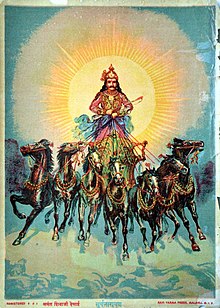
This sequential flow of bending and bowing yoga poses is typically presented at the beginning of class to warm the body for more active yoga poses. Expanding you on the inhale (prana vayu) and grounding/ contracting you on the exhale (apana vayu).
Surya (Sanskrit for Sun), Namas (salute) & kara (doing).
Surya Namaskar (Sun Salutation) greets and pays homage to the sun.
In ancient Hindu mythology, Lord Surya (the Sun) is considered the source of all life, light, heat, and knowledge. It is said he rides across the sky in a chariot pulled by seven shining horses traversing around the world. Surya is also believed to be the leader of the Navagraha, an assembly of 9 solar deities responsible for controlling the cosmic universe.
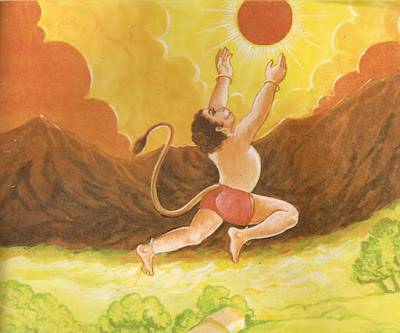
Hanuman, the great monkey hero of the Ramayana, was fascinated with Surya. As a baby, he mistook it for a luscious mango. Jumping off from the earth, he seize the sun and ate it, causing the universe to go dark and upsetting the gods.
Later, Hanuman turned to Surya to be his teacher. Traveling backward, with his face to his teacher, he mastered all the Vedas within a week. Some say that Hanuman’s backward-moving trajectory was the origin of Surya namaskar or sun salutes.
The origin of the practice
Historically, the practice of Surya Namaskar may have developed from ancient rituals, spells, and chants honoring Surya as the source of energy and light for the world.
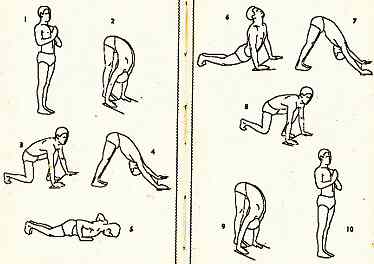
The sequence of postures, as we know Surya Namaskar today, can only be traced back to the 1920s. They were then made popular by the Raja of Aundh – a tiny kingdom now part of Maharashtra – who introduced them in his 1928 book The Ten-Point Way to Health: Surya Namaskars.
In the 1930s, Krisnamacharya, the father of modern yoga, began to incorporate them into his yoga teachings in Mysore, India influenced by practices of the time and Indian wrestlers’ exercise manuals left at the Mysore palace where he was teaching.
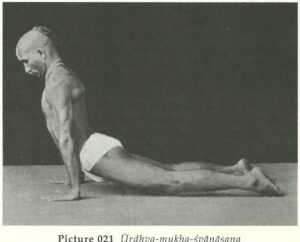
Some notable students of Krysnamacharia include many of yoga’s most renowned and influential teachers: K. Pattabhi Jois founder of Ashtanga yoga (1915–2009); B. K. S. Iyengar- founder of Iyengar alignment-based yoga (1918-2014); his son T. K. V. Desikachar – founder of Viniyoga (1938-2016). These teachers all contributed to modern yoga as we know it today.
Its modern origin does not diminish its timeless importance or power. The bowing sequence is embraced in the yoga community and revered as a foundational sequence for aspiring and advanced yogis alike.
The Significance of Surya Namaskar in yoga class

Surya Namaskar blends, or yokes (unites), breath, movement, and foundational yoga poses for a whole-body experience.
The series of poses’ primary intention is to awaken the sun’s energy that normally lies dormant at the navel center.
When practiced with attention and intention, Surya Namaskar allows us to reach deep into our solar plexus and awaken and circulate the sun’s healing power to restore a radiant body and cultivate a tranquil mind. After practicing a few rounds of the sun salutation, you can calm your digestive fire, energize your nervous system, activate both the lower and upper extremities, and influence your moods.
A well-rounded and complete yoga sequence on their own, sun salutations are one of the most complete practices of Hatha yoga, they are used as a warm-up in Ashtanga, form the basis of most Vinyasa classes, and can be practiced stand-alone on days when you feel too busy or too tired for more.
Surya Namaskar Benefits
An increasing number of studies point to the physical and mental health benefits of Surya Namaskar and yoga in general. Some of these benefits are:
- Warms and mobilizes the entire body
- Stretches and flexes the spine
- Relieves tightness in the neck, shoulders, and low back
- Increases overall stamina and endurance
- Improves blood circulation and cardiovascular health
- Stretches the front and back of the body
- Balances relaxation and effort by focusing on breath and movement synchronization
- Develops concentration, alertness, and focus
- Awakens Agni, the digestive fire or tapas (passion).
The different types of Sun Salutations
Yoga style, lineage, and teacher will affect the variations of your sun salutation but these are their most classical versions though you might see many different kinds.
Classical Surya Namaskar (Hatha Yoga Tradition)
The classical Surya Namaskar emerges from the Hatha Yoga tradition and involves 12 postures moving in a cyclical fashion.
The 12 steps are:
- Tadasana (mountain pose)
- Urdhva Hastasana (extended mountain pose)
- Uttanasana (standing forward fold)
- Ashwa Sanchalanasana (equestrian pose – left foot forward)
- Palakhasana (high plank pose)
- Ashtanganasana (eight-point pose)
- Bhujangasana (cobra pose)
- Adho Mukha Svanasana (downward-facing dog)
- Ashwa Sanchalanasana (Runners lunge- right foot forward)
- Uttanasana (standing forward fold)
- Urdhva Hastasana (extended mountain pose)
- Finish by returning back to Tadasana (Mountain) Pose.

The Hatha Yoga sun salutations can be practiced at the physical level only or taken to a spiritual dimension by bringing attention to specific energy points of the body (chakras) and reciting mantras.
Modern Surya Namaskar A + B (Ashtanga Vinyasa Tradition)
Surya Namaskar A and B are two modern versions of Surya Namaskar. They were made popular by Pattabhi Jois, the founder of the Ashtanga Yoga method. Surya Namaskar A and B are repeated 5 and 3 times respectively at the beginning of an Ashtanga practice.
The Surya Namaskar A counts 11 poses, performed at a one-breath-per-movement ratio with 5 breaths in Adho Mukha Svanasana (downward-facing dog).
1. Tadasana (mountain pose)
2. Urdhva Hastasana (extended mountain pose)
3. Uttanasana (standing forward fold)
4. Ardha Uttanasana (halfway lift forward fold)
5. Chaturanga Dandasana (four-limbed staff pose)
6. Urdhva Mukha Svanasana (upward-facing dog)
7. Adho Mukha Svanasana (downward-facing dog)
8. Ardha Uttanasana (halfway lift forward fold)
9. Uttanasana (standing forward fold)
10. Urdhva Hastasana (extended mountain pose)
11. Tadasana (Mountain) Pose.

The Surya Namaskar B counts 17 poses. Building on the A variation, the B salutation starts in Utkatasana (chair pose) and involves Virabhadrasana I (Warrior 1) on each side before spending 5 breaths in Adho Mukha Svanasana (downward-facing dog).
Modifications for Surya Namaskar
- Use blocks under the wrists when reaching down or in lunge.
- Practice Chaturanga Dandasana on your knees (called “Half” Chaturanga) or make it an Ashtangasana, the eight-point pose with your knees chest, and chin touching the ground.
- Replace Urdhva Mukha Svanasana (upward-facing dog) with Bhujangasana (full or baby cobra), leaving the knees resting on the ground.
Conclusion
Surya Namaskar is a great sequence to warm up the body or as a complete, full-body yoga practice. It can be performed at your own pace, with accessible variations, and you can choose how many repetitions to do.
Practicing this sequence daily can foster an increased sense of gratitude for each new day and help you rise to greet it! Come practice Surya Namaskar with us in class! Also, check out my free sun salutation video to learn more about this foundational sequence.


I understand what it's like to desire more out of life and look to yoga as a path to wellbeing. Your practice can awaken new perspectives as you tune in with your physical and emotional body.
When I started practicing, my finance career was at its height of success. I had the fancy job title but lacked fulfillment. I found the more I leaned into the yogic path, the more my whole life came into alignment.
I'm Hélène
Hey there!
more about me
FREE DOWNLOAD
Steal This
Get Your Ashtanga
Starter Kit
Practice With Me
group classes
private YOGA
WORKSHOPS
RETREATS
What is Ashtanga Yoga?

Learning one or several variations of Surya Namaskar (Sun Salutation) is foundational when it comes to building a consistent yoga practice.
Surya Namaskaras are the backbone of Vinyasa Yoga classes and are an integral part of the Ashtanga Yoga method. They are fundamental sequences to build strength, to learn how to synchronize breath to movement, and to cultivate a tranquil mind.
Surya Namaskaras invite you to rise to salute the sun, connect to your inner and outer light and shine bright like the sun.
This article covers the mythology, origins, benefits, and different variations:
- The mythology of Surya Namaskar
- The origin of the practice
- The Significance of Surya Namaskar in yoga class
- Surya Namaskar benefits
- The different types of Surya Namaskar

The mythology of Surya Namaskar (Sun Salutation)

This sequential flow of bending and bowing yoga poses is typically presented at the beginning of class to warm the body for more active yoga poses. Expanding you on the inhale (prana vayu) and grounding/ contracting you on the exhale (apana vayu).
Surya (Sanskrit for Sun), Namas (salute) & kara (doing).
Surya Namaskar (Sun Salutation) greets and pays homage to the sun.
In ancient Hindu mythology, Lord Surya (the Sun) is considered the source of all life, light, heat, and knowledge. It is said he rides across the sky in a chariot pulled by seven shining horses traversing around the world. Surya is also believed to be the leader of the Navagraha, an assembly of 9 solar deities responsible for controlling the cosmic universe.

Hanuman, the great monkey hero of the Ramayana, was fascinated with Surya. As a baby, he mistook it for a luscious mango. Jumping off from the earth, he seize the sun and ate it, causing the universe to go dark and upsetting the gods.
Later, Hanuman turned to Surya to be his teacher. Traveling backward, with his face to his teacher, he mastered all the Vedas within a week. Some say that Hanuman’s backward-moving trajectory was the origin of Surya namaskar or sun salutes.
The origin of the practice
Historically, the practice of Surya Namaskar may have developed from ancient rituals, spells, and chants honoring Surya as the source of energy and light for the world.

The sequence of postures, as we know Surya Namaskar today, can only be traced back to the 1920s. They were then made popular by the Raja of Aundh – a tiny kingdom now part of Maharashtra – who introduced them in his 1928 book The Ten-Point Way to Health: Surya Namaskars.
In the 1930s, Krisnamacharya, the father of modern yoga, began to incorporate them into his yoga teachings in Mysore, India influenced by practices of the time and Indian wrestlers’ exercise manuals left at the Mysore palace where he was teaching.

Some notable students of Krysnamacharia include many of yoga’s most renowned and influential teachers: K. Pattabhi Jois founder of Ashtanga yoga (1915–2009); B. K. S. Iyengar- founder of Iyengar alignment-based yoga (1918-2014); his son T. K. V. Desikachar – founder of Viniyoga (1938-2016). These teachers all contributed to modern yoga as we know it today.
Its modern origin does not diminish its timeless importance or power. The bowing sequence is embraced in the yoga community and revered as a foundational sequence for aspiring and advanced yogis alike.
The Significance of Surya Namaskar in yoga class

Surya Namaskar blends, or yokes (unites), breath, movement, and foundational yoga poses for a whole-body experience.
The series of poses’ primary intention is to awaken the sun’s energy that normally lies dormant at the navel center.
When practiced with attention and intention, Surya Namaskar allows us to reach deep into our solar plexus and awaken and circulate the sun’s healing power to restore a radiant body and cultivate a tranquil mind. After practicing a few rounds of the sun salutation, you can calm your digestive fire, energize your nervous system, activate both the lower and upper extremities, and influence your moods.
A well-rounded and complete yoga sequence on their own, sun salutations are one of the most complete practices of Hatha yoga, they are used as a warm-up in Ashtanga, form the basis of most Vinyasa classes, and can be practiced stand-alone on days when you feel too busy or too tired for more.
Surya Namaskar Benefits
An increasing number of studies point to the physical and mental health benefits of Surya Namaskar and yoga in general. Some of these benefits are:
- Warms and mobilizes the entire body
- Stretches and flexes the spine
- Relieves tightness in the neck, shoulders, and low back
- Increases overall stamina and endurance
- Improves blood circulation and cardiovascular health
- Stretches the front and back of the body
- Balances relaxation and effort by focusing on breath and movement synchronization
- Develops concentration, alertness, and focus
- Awakens Agni, the digestive fire or tapas (passion).
The different types of Sun Salutations
Yoga style, lineage, and teacher will affect the variations of your sun salutation but these are their most classical versions though you might see many different kinds.
Classical Surya Namaskar (Hatha Yoga Tradition)
The classical Surya Namaskar emerges from the Hatha Yoga tradition and involves 12 postures moving in a cyclical fashion.
The 12 steps are:
- Tadasana (mountain pose)
- Urdhva Hastasana (extended mountain pose)
- Uttanasana (standing forward fold)
- Ashwa Sanchalanasana (equestrian pose – left foot forward)
- Palakhasana (high plank pose)
- Ashtanganasana (eight-point pose)
- Bhujangasana (cobra pose)
- Adho Mukha Svanasana (downward-facing dog)
- Ashwa Sanchalanasana (Runners lunge- right foot forward)
- Uttanasana (standing forward fold)
- Urdhva Hastasana (extended mountain pose)
- Finish by returning back to Tadasana (Mountain) Pose.

The Hatha Yoga sun salutations can be practiced at the physical level only or taken to a spiritual dimension by bringing attention to specific energy points of the body (chakras) and reciting mantras.
Modern Surya Namaskar A + B (Ashtanga Vinyasa Tradition)
Surya Namaskar A and B are two modern versions of Surya Namaskar. They were made popular by Pattabhi Jois, the founder of the Ashtanga Yoga method. Surya Namaskar A and B are repeated 5 and 3 times respectively at the beginning of an Ashtanga practice.
The Surya Namaskar A counts 11 poses, performed at a one-breath-per-movement ratio with 5 breaths in Adho Mukha Svanasana (downward-facing dog).
1. Tadasana (mountain pose)
2. Urdhva Hastasana (extended mountain pose)
3. Uttanasana (standing forward fold)
4. Ardha Uttanasana (halfway lift forward fold)
5. Chaturanga Dandasana (four-limbed staff pose)
6. Urdhva Mukha Svanasana (upward-facing dog)
7. Adho Mukha Svanasana (downward-facing dog)
8. Ardha Uttanasana (halfway lift forward fold)
9. Uttanasana (standing forward fold)
10. Urdhva Hastasana (extended mountain pose)
11. Tadasana (Mountain) Pose.

The Surya Namaskar B counts 17 poses. Building on the A variation, the B salutation starts in Utkatasana (chair pose) and involves Virabhadrasana I (Warrior 1) on each side before spending 5 breaths in Adho Mukha Svanasana (downward-facing dog).
Modifications for Surya Namaskar
- Use blocks under the wrists when reaching down or in lunge.
- Practice Chaturanga Dandasana on your knees (called “Half” Chaturanga) or make it an Ashtangasana, the eight-point pose with your knees chest, and chin touching the ground.
- Replace Urdhva Mukha Svanasana (upward-facing dog) with Bhujangasana (full or baby cobra), leaving the knees resting on the ground.
Conclusion
Surya Namaskar is a great sequence to warm up the body or as a complete, full-body yoga practice. It can be performed at your own pace, with accessible variations, and you can choose how many repetitions to do.
Practicing this sequence daily can foster an increased sense of gratitude for each new day and help you rise to greet it! Come practice Surya Namaskar with us in class! Also, check out my free sun salutation video to learn more about this foundational sequence.


